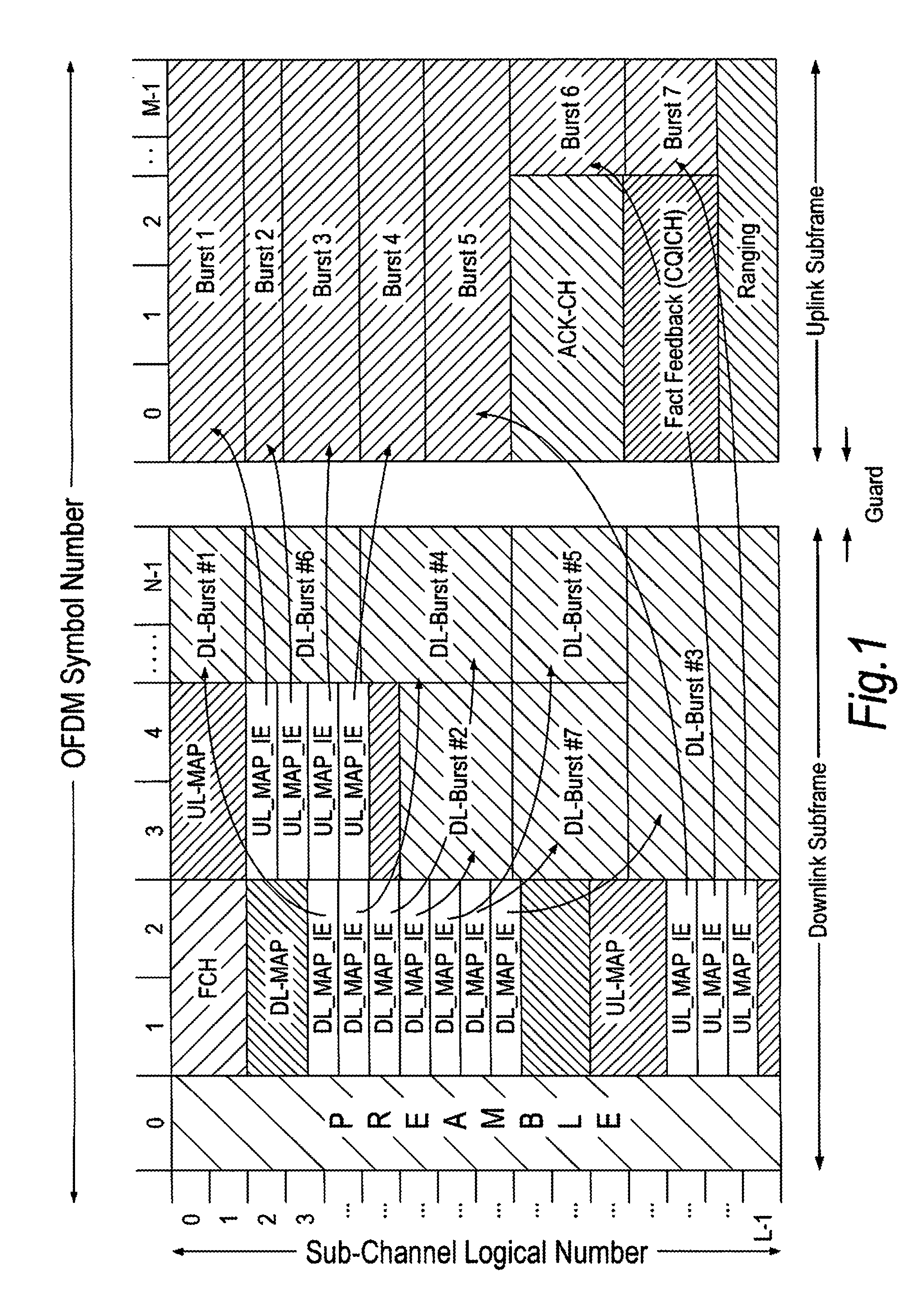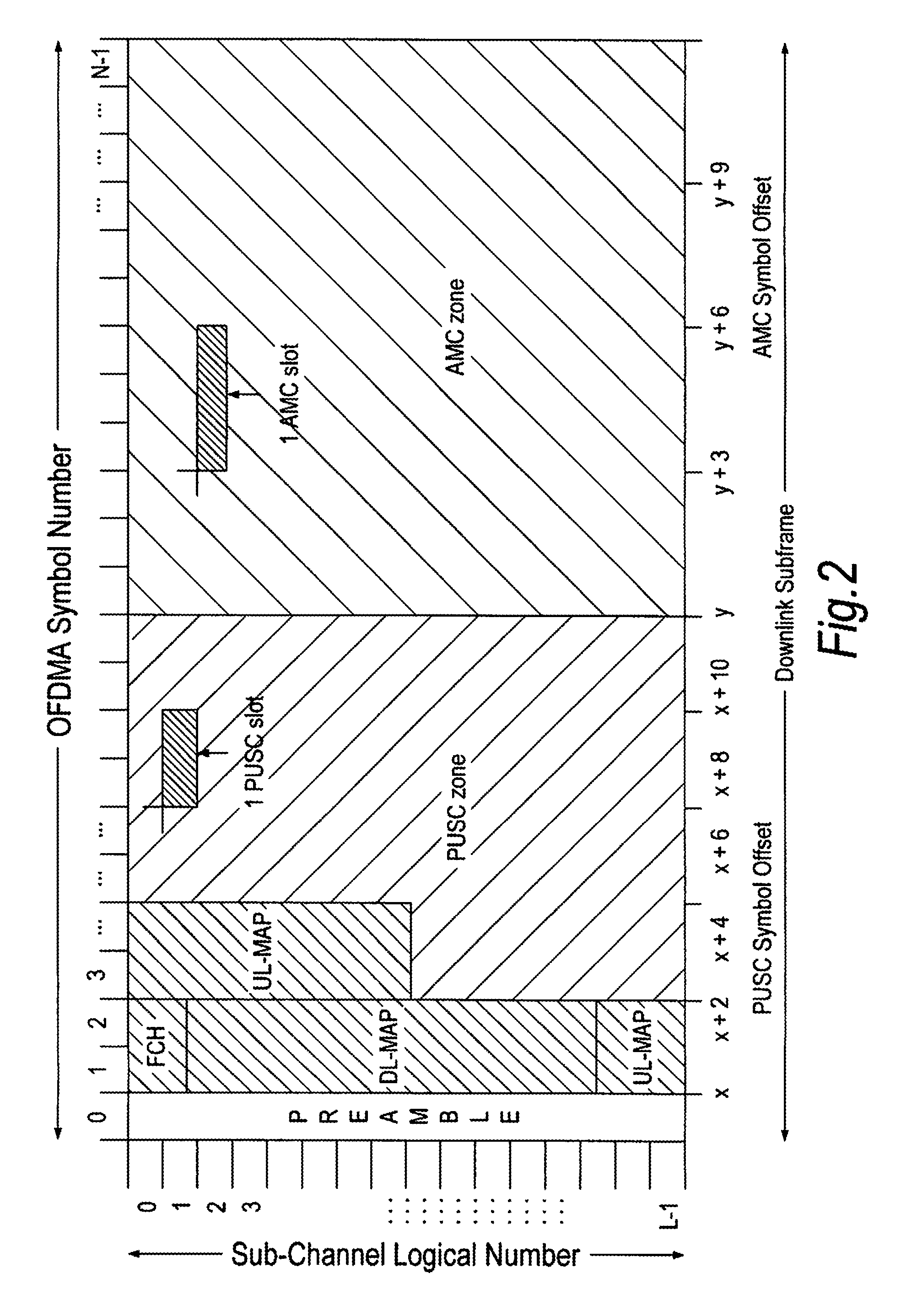Wireless communication systems
a communication system and wireless technology, applied in the field of wireless communication systems, can solve problems such as the issue of allowing bi-directional communication
- Summary
- Abstract
- Description
- Claims
- Application Information
AI Technical Summary
Benefits of technology
Problems solved by technology
Method used
Image
Examples
Embodiment Construction
[0052]As outlined in the above introduction, in OFDMA-based communication systems (e.g. 802.16-2004 and 802.16e-2005), in order to allocate resources to each fixed or mobile subscriber station (MS) within its cell, the base station (BS) first schedules the two-dimensional (2×D, frequency and time dimension) resource allocation and the relevant transmission parameters, such as transmission power, modulation and coding schemes for the connections with each MS. Then the BS signals the allocation and the related information to each MS by using the MAP-IEs (MAP Information Elements) shown in FIG. 1. Each MAP_IE corresponds to one “burst” in the downlink, but each MAP_IE / burst can be used for multiple connections. Below, the MAP_IEs are also called “control messages”.
[0053]However, in currently-proposed OFDMA based wireless communication systems such as 802.16e-2005, the overhead due to this control signalling in the physical layer is cumbersome, especially when a large number of users ar...
PUM
 Login to View More
Login to View More Abstract
Description
Claims
Application Information
 Login to View More
Login to View More - R&D
- Intellectual Property
- Life Sciences
- Materials
- Tech Scout
- Unparalleled Data Quality
- Higher Quality Content
- 60% Fewer Hallucinations
Browse by: Latest US Patents, China's latest patents, Technical Efficacy Thesaurus, Application Domain, Technology Topic, Popular Technical Reports.
© 2025 PatSnap. All rights reserved.Legal|Privacy policy|Modern Slavery Act Transparency Statement|Sitemap|About US| Contact US: help@patsnap.com



